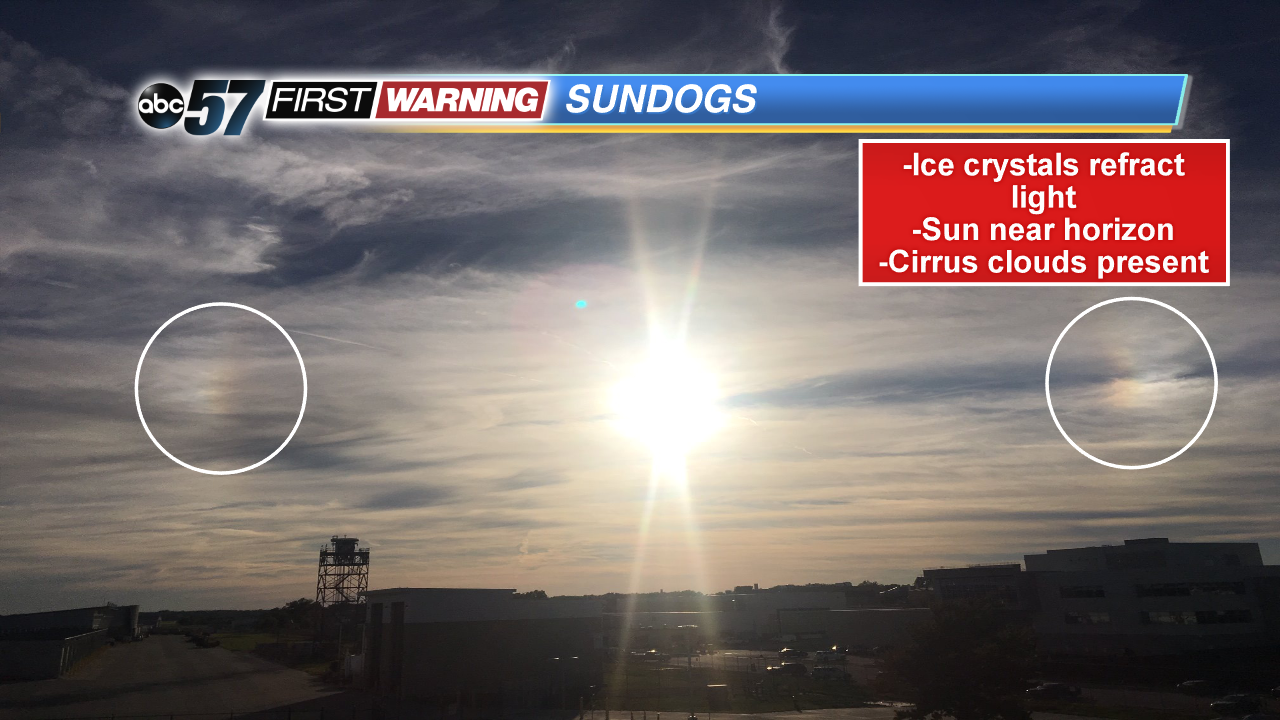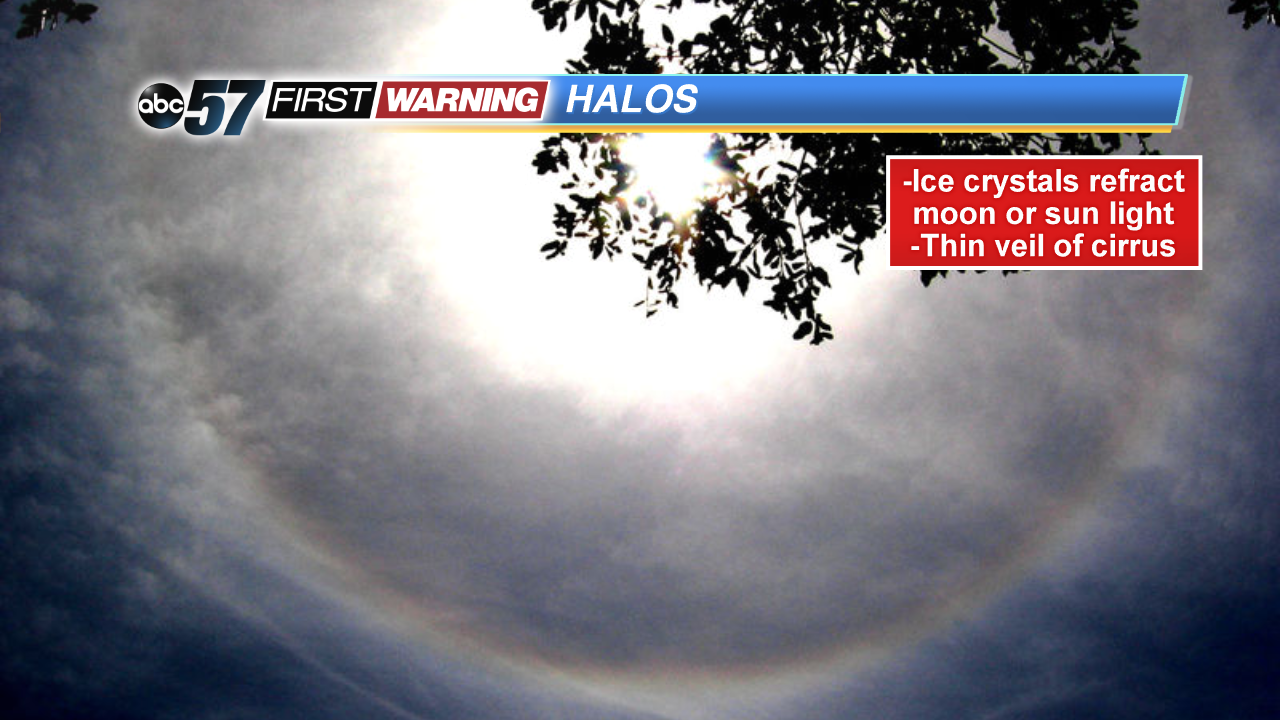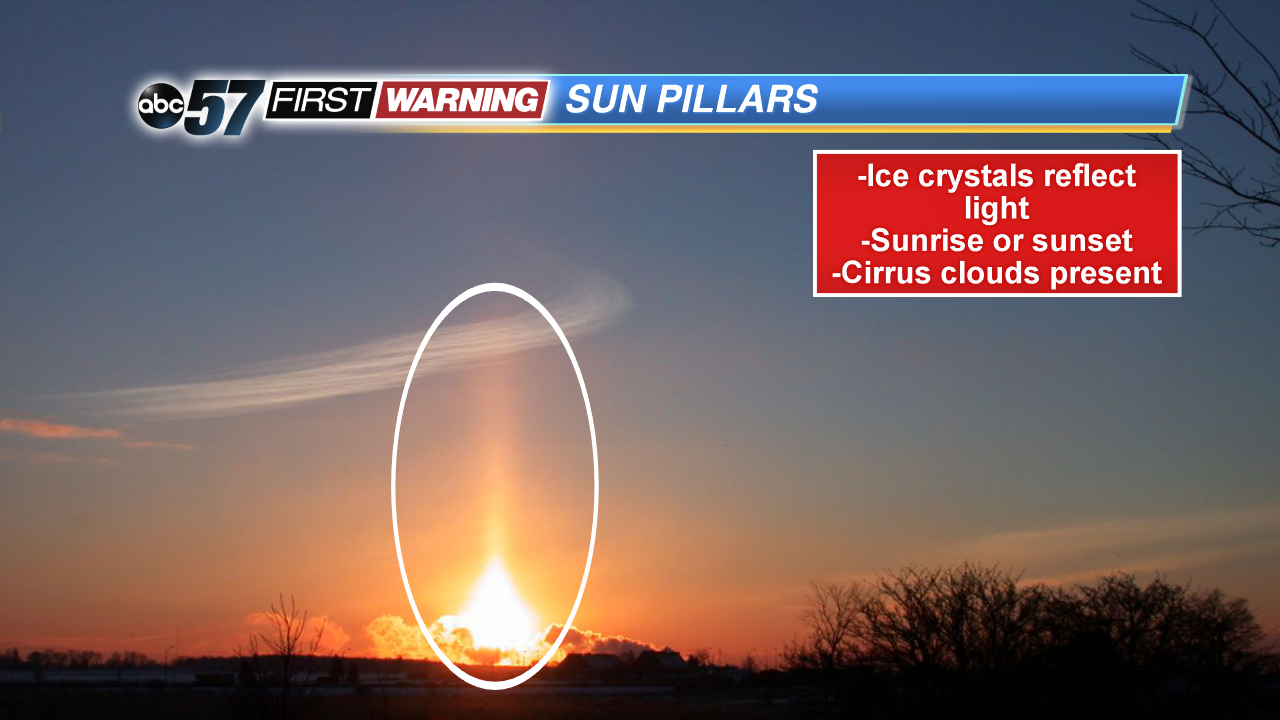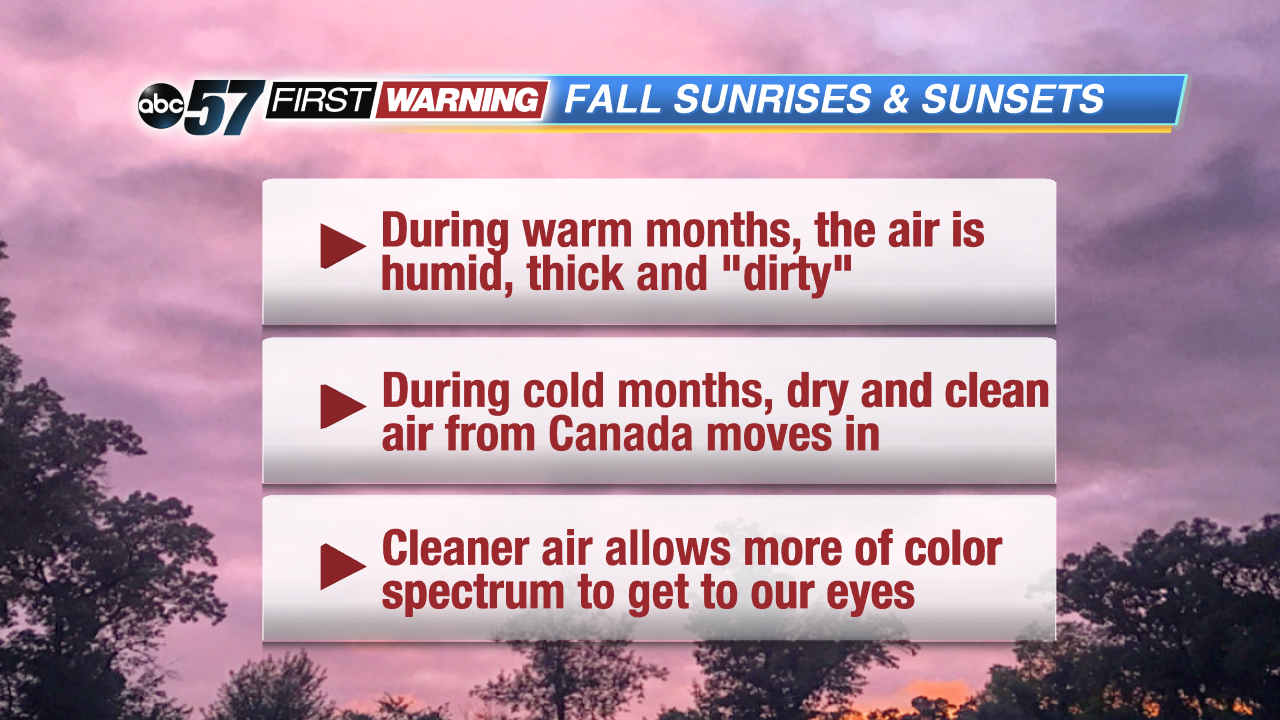Look up: sundogs, halos and pillars
Posted: Oct 17, 2018 12:33 PM EST
As we head through fall and into the winter season, you may notice some pretty cool things appearing in the sky. Sundogs, halos, circumhorizontal arcs ("fire rainbows"), and sun pillars can occur at any time of the year, but they become increasingly common by late October thru early spring. They are what meteorologists refer to as atmospheric optical phenomena. That's because they deal with light (optical) from the sun or moon interacting with tiny ice crystals suspended in cirrus clouds.
They are each formed by either the refraction or reflection of light. For sundogs, circumhorizontal arcs and halos, the process is refraction. The sun's light refracts off of hexagonal shaped ice crystals within cirrus clouds. When this occurs, light is broken into its component colors, thus creating the rainbow effect that you see in most sundogs, arcs and halos. Not all of them are created equal, however. Some sundogs or halos may appear more vivid than others.
In fact, some halos may not exhibit much in the way of color at all depending on how the ice crystals are organized within the cirrus clouds. Sometimes these phenomena are very noticeable to the naked eye; other times you may have to squint to see them. Sun pillars are another type of optical phenomena that occur more often in the cold months. These are different than sundogs, arcs and halos because the sun's light is reflected by ice crystals within cold cirrus clouds, meaning there is no rainbow hue to them.
The best time to view a sundog or sun pillar is when the sun is near the horizon. This would be shortly after sunrise or shortly before sunset. For circumhorizontal arcs and halos, it's best to look when the sun is higher up in the sky (at least 58°). The reason behind these phenomena being more common in the fall and winter boils down to there being more ice crystals present in the atmosphere. Not only that, but cirrus clouds are more common in the late fall and winter as well.
Your chances of seeing a vibrant sunrise or sunset will also go up over the next several months thanks to drier, cleaner air surging southward from Canada behind each passing cold front. During the summertime, the air is heavy, humid and "dirty." The result is a less-vibrant sunrise or sunset. The cleaner, fresh air during the cold months allows more of the color spectrum to reach our eyes without being scattered away! So, the next time you're out and about, check for cirrus clouds. You may just see something you've never seen before!


















